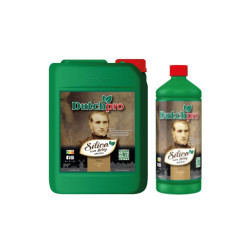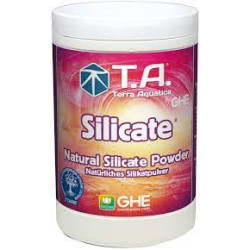
The world's favourite nutrient meter just got better with the V2! With its super tough, high quality, fully waterproof design, no calibration required, daylight...
Silicon is a beneficial plant nutrient, found in virtually all natural soils but not - until now - in hydroponic nutrient solutions. Silicon will strengthen the plant walls producing stronger healthier plants with massive root systems and increased resistance to pests and disease. Liquid Silicon is highly beneficial to plants in the range of 10-30 ppm in the nutrient solution. It is not included, and cannot be included, at these levels, in nutrient concentrates. It needs to be added as a separate component by the grower. Liquid Silicon can be added to nutrient tanks every time a fresh batch is made up.
 PAYMENT
We accept Visa, MasterCard and American Express.
PAYMENT
We accept Visa, MasterCard and American Express.
 FREE SHIPPING
All orders over $100 free super fast delivery
FREE SHIPPING
All orders over $100 free super fast delivery
 BEST PRIEC GUARANTEE
The best choice for high quality at good prices.
BEST PRIEC GUARANTEE
The best choice for high quality at good prices.
 SHIPPING
We ship to over 100 countries worldwide through fast and reliab
SHIPPING
We ship to over 100 countries worldwide through fast and reliab

Security policy

Delivery policy

Return policy
Silicon is a beneficial plant nutrient, found in virtually all natural soils but not - until now - in hydroponic nutrient solutions. Silicon will strengthen the plant walls producing stronger healthier plants with massive root systems and increased resistance to pests and disease. Liquid Silicon is highly beneficial to plants in the range of 10-30 ppm in the nutrient solution. It is not included, and cannot be included, at these levels, in nutrient concentrates. It needs to be added as a separate component by the grower. Liquid Silicon can be added to nutrient tanks every time a fresh batch is made up.
Liquid Silicon has an important role in the uptake and vascular transport of mineral nutrients, and can greatly improve the mechanical "strength" of the plant and its resistance to fungal diseases.
The addition of Liquid Silicon to nutrient solutions can greatly reduce the incidence and severity of fungal diseases including Botrytis (bud rot) and powdery mildew.
Recent research has demonstrated that raising the silicon concentration in hydroponic solutions produced thicker, whiter, healthier root systems and increased yields.
Silicon has also been shown to result in higher concentrations of chlorophyll per unit area of leaf tissue. This means that a plant is able to tolerate both lower and higher light levels by using more of the available light.

 Watch how it works
Watch how it works

Dutchpro Silica – Von Liebig’s Special is a Silicon Dioxide that is used to increase yield and stress train your plant. Silica improves the uptake of nutrients,...
Like the protective armour of a Samurai Warrior, SHOGUN Silicon protects and...

Silicate is an essential element for higher plants, especially when growing with water as a substrate. New pH neutral Silicate contains ancient deposits of...
Monkey Stress is a stable and bio-available form of silicon, called mono-silicic acid (also called Ortho-silicic acid). Although not an essential nutrient for plant...
Continuing their innovating range of specialist products, Mills Nutrients have now released Vitalize, available exclusively from DNA Mills Ltd. This monosilicic acid...
Silicon has been shown to result in higher concentrations of chlorophyll (The green pigment essential for photosynthesis) per unit area of leaf tissue and this means...
That element is silica, which is the second most abundant element in the earth's crust (oxygen is the most prevalent), but guess what? Silica is missing from...